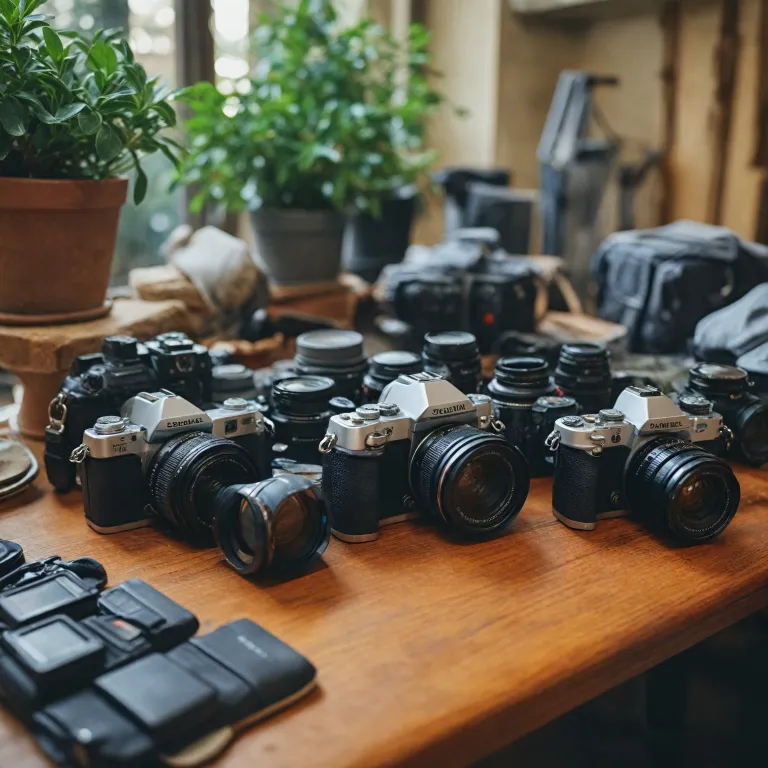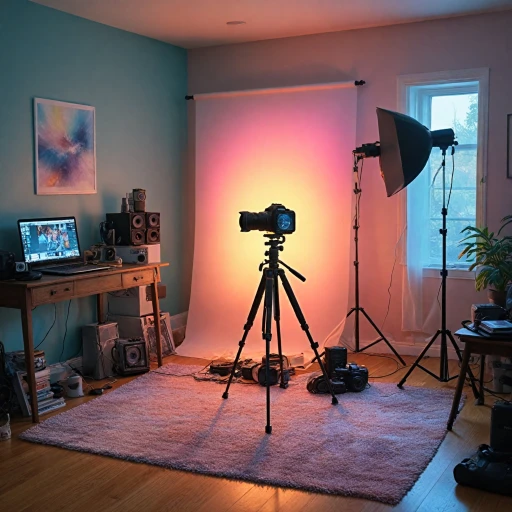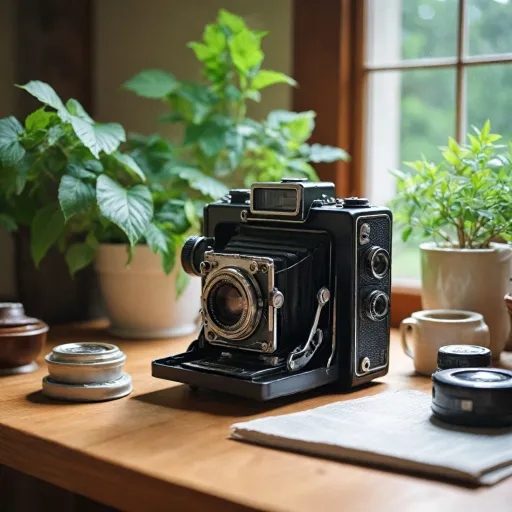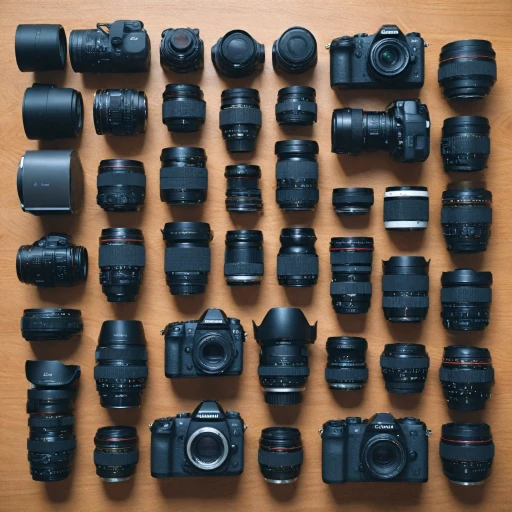
Understanding Point-and-Shoot Cameras
Unraveling the Basics of Compact Solutions
Point-and-shoot cameras, often dubbed as compact cameras, offer an accessible entry point into the world of digital photography. These portable devices bring simplicity and convenience to those who are eager to capture life's moments without the need for extensive knowledge of manual controls or interchangeable lenses.
Equipped with a fixed lens and automatic settings, these cameras enable users to effortlessly point, shoot, and capture images with decent image quality in good light conditions. The compact nature of these devices often means they can easily slip into a pocket or small bag, making them a favored choice for travel or everyday photography enthusiasts.
While they may lack the advanced sensors and high shutter speed capabilities of DSLR cameras, many modern point-and-shoot models still manage to deliver impressive results. For instances where low light is a challenge, some advanced models even offer a manual mode for more creative control, allowing adjustments to settings like depth of field, which is traditionally a stronghold of DSLRs.
In a market teeming with versatile options, some standout models like the Canon G7X series have gained popularity for balancing portability with exceptional features. For further exploration, you can read more about comparing the Canon G7X Mark II and Mark III, which may help you decide if this type of camera aligns with your photographic ambitions.
Exploring the World of DSLRs
Getting to Know DSLR Cameras
Digital Single-Lens Reflex (DSLR) cameras are popular among photography enthusiasts for several compelling reasons. A significant feature of DSLRs is their use of a mirror mechanism to reflect light from the camera lens into an optical viewfinder. This allows photographers to preview the scene directly through the lens, offering an accurate representation of what the final image will capture. Unlike point-and-shoot cameras, DSLRs come with interchangeable lenses, giving users the flexibility to switch out lenses for different types of photography such as wide-angle landscapes or close-up portraits. The versatility in lens options is a major advantage, particularly for those who aim to explore various photographic styles. One of the most appealing aspects of DSLR cameras is their ability to operate in manual mode. This setting provides extensive manual control over details like shutter speed, aperture, and ISO. Such control allows photographers to fine-tune their images, capturing scenes exactly how they envision. This is particularly beneficial for capturing images in challenging lighting conditions, such as low light environments, where precise adjustments can dramatically enhance image quality. Another notable advantage of DSLRs is their larger sensors which generally outperform those in compact cameras. Larger sensors increase light capture, resulting in superior image quality and better performance in low light scenarios. This feature indeed sets DSLRs apart from their point shoot counterparts, providing excellent depth of field control. Furthermore, many modern DSLRs incorporate features from the rapidly evolving realm of mirrorless camera technology, adding even more functionality and ease of use. For those considering the budget aspect, DSLRs are available at a wide range of prices. Although generally more expensive than point-and-shoot models, investing in a DSLR could be worthwhile for those looking to elevate their photography skills and explore more advanced techniques. Exploring budget-friendly film cameras may also provide valuable insights into cost-effective ways to enhance your photography toolkit. Overall, when considering DSLRs, it's crucial to think about your specific needs, including the level of control you desire, the type of photography you want to pursue, and your budget.Comparing Image Quality
Comparing Sensor Size and Resolution
When discussing image quality in digital cameras, a key component is the sensor. DSLRs usually boast larger sensors compared to point-and-shoot cameras, allowing for better image capture capabilities, especially in low light conditions. The sensor size influences the image resolution and the depth of field, offering photographers more room for creativity. DSLRs typically provide better control over shutter speed and aperture due to their advanced sensor technology.Optical Viewfinder vs. LCD Screen
Another element that differentiates these cameras is how you compose your shots. DSLRs come equipped with an optical viewfinder that allows users to see the actual scene, devoid of any digital manipulation. In contrast, point-and-shoot cameras often rely on LCD screens, offering a digital preview of the image. This can impact the final photograph, as the preview might not perfectly represent the initial view.Lens Selection and Accessories
One can't overlook the importance of lenses in determining image quality. DSLRs often shine in this department, with interchangeable lenses providing endless possibilities for photographers. This flexibility allows users to tailor their setup to suit specific shooting scenarios, whether you're capturing expansive landscapes or intimate portraits. Point-and-shoot cameras, in comparison, come with fixed lenses, which may limit your ability to control the outcome of an image. For those considering expanding their photography gear, it's worth exploring some camera accessories that complement DSLRs, such as external flashes and filters, augmenting both the functionality and image quality.Manual and Automatic Modes
The level of control offered also plays a significant role in image quality. Camera DSLRs provide a plethora of manual settings that enable precise adjustments, whether it’s altering the shutter speed for fast-moving subjects or tweaking the ISO for capturing in low light situations. While point-and-shoot cameras offer convenience with automatic modes, those seeking the best image quality may find the manual control of DSLRs more beneficial for their artistic aspirations.Ease of Use and Portability
Convenience and Flexibility in Various Conditions
When it comes to ease of use and portability, camera selections often align with the user's photography style and requirements. Let's delve into the key aspects of convenience and flexibility, especially contrasting point-and-shoot cameras with DSLRs.
Point-and-shoot cameras are designed for simplicity and ease of use. Their compact size and lightweight structure make them the go-to choice for casual photographers or travelers prioritizing portability. Many shoot cameras come with automatic settings that allow users to capture decent images without much effort, making it ideal for those who prefer convenience over complexity. They fill the gap perfectly when you need quick snaps without the hassle of adjusting settings manually.
In contrast, DSLRs and mirrorless cameras are slightly bulkier due to the inclusion of components like the optical viewfinder and sensor. However, this design affords photographers the option of interchangeable lenses, which offers substantial flexibility and creative freedom. A DSLR camera allows users to explore manual control over settings like shutter speed, aperture, and ISO, enhancing the depth field and image quality, particularly in challenging lighting conditions. For seasoned photographers or enthusiasts, the added control and customization available in a DSLR or mirrorless camera might outweigh the trade-off in portability.
When evaluating the convenience of maintaining and transporting your gear, also consider the accessories that are part of this equation. Point shoot setups generally require fewer accessories, whereas DSLR users often manage multiple lenses and manual mode accessories.
Ultimately, the decision depends on your personal priorities – is it having a compact camera that's ready at a moment's notice, or possessing a DSLR that offers remarkable control and versatility in varying photographic scenarios?
Cost Considerations
When Budget Meets Performance
The budget is, without a doubt, a significant factor in deciding between these two types of cameras. The cost varies significantly between point-and-shoot cameras and DSLRs, with several variables influencing the price, including sensor size, lens quality, and included accessories.- Point-and-Shoot Cameras: Generally, shoot cameras boast affordability, making them a compelling choice for beginners or those who don’t wish to invest heavily. However, despite their compact nature, a shoot camera may lack certain features such as manual control or interchangeable lenses.
- DSLR Cameras: On the flip side, DSLRs usually come with a higher price tag because of their advanced features, such as larger sensors, more sophisticated optical viewfinders, and the ability to control settings like shutter speed and depth of field through manual mode. The investment is more substantial, but for those focused on image quality, a DSLR might be the best choice. A DSLR camera allows you to achieve stunning results, especially in low light conditions.
Making the Right Choice for Your Needs
Finding the Ideal Match for Your Photography Journey
Choosing the right digital camera can seem like a daunting task with so many elements to consider. It's important to align your selection with your individual photography needs and preferences. Each camera type offers distinct advantages, making them suitable for varying scenarios and skill levels.
For those who prioritize mobility and simplicity, point-and-shoot cameras prove to be a practical option. They excel in their compact nature, allowing for easy portability. Whether you're shooting in auto mode or exploring some basic manual controls, these cameras provide a straightforward photography experience, ideal for casual users or those new to photography.
On the other hand, if you're drawn toward achieving high image quality and creative control, DSLR cameras might be your go-to choice. They offer superior image sensors, allowing for enhanced depth of field and image clarity. The interchangeable lenses available for DSLRs open up a world of possibilities, enabling you to adapt to different shooting conditions and subjects. DSLR cameras also offer more tailored manual control, found in settings like shutter speed, aperture, and ISO.
It's also worth considering a mirrorless camera, a category that bridges the gap between point-and-shoot convenience and DSLR versatility. These models often provide image quality and adaptability comparable to DSLRs but in a more compact form factor, making them a favored choice among photographers seeking the best of both worlds.
We suggest evaluating your budget, considering initial costs and potential future investments in lenses and accessories. Understanding the basics about each type can help clarify which camera system aligns with your creative aspirations and practical requirements. Ultimately, the decision should rest upon your personal goals and the type of photography experiences you wish to explore.












